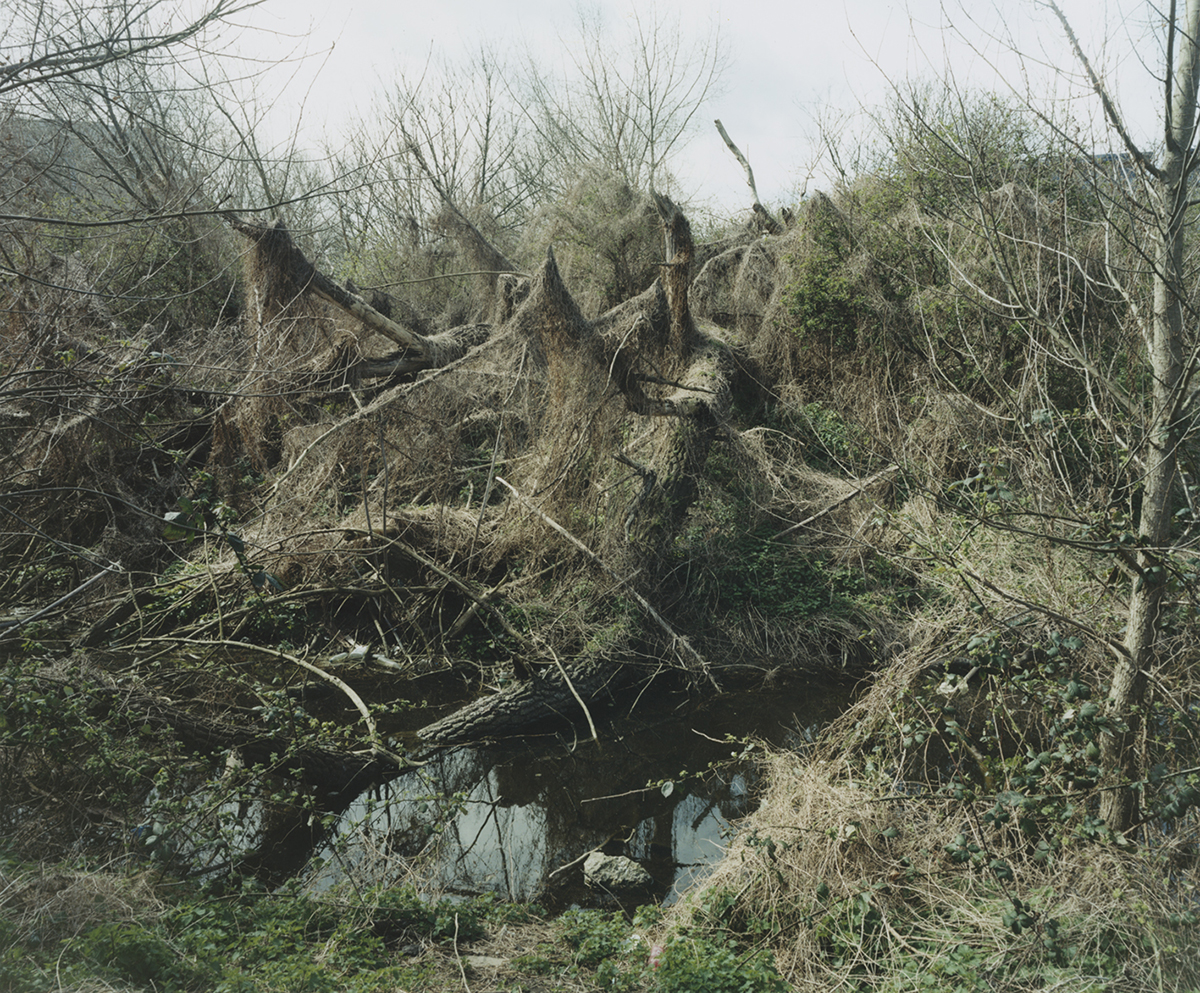Suzie Howell – Inside the Spider
WORDS BY FIORELLA LANNI
“I was initially attracted to the Marshes because of its wild, natural beauty and how easy it is to escape the hustle and bustle of the city there. A lot of the project is based around the attractiveness of the landscape and a feeling of escapism but it’s also about the sense of mystery that the area possesses.” – Suzie Howell
For the last three years, Suzie Howell has regularly photographed Walthamstow Marshes in East London. Exploring the wild, natural beauty of one of the last natural Wetlands in the capital, Inside the Spider delves into Howell’s interpretation of the landscape. Dealing with themes of time, nature and sculptural forms, the photographer has created captivating images of seemingly unperturbed landscapes.
The undeniable beauty and spiritual appearance of the marshes is accentuated by the presence of light passing through the trees, casting shadows over the water.
In one image, that lends the series its name, a tree’s branches spread out all over the land, reminiscent of a spider’s slender legs, suspended high above the ground swallowing everything that’s underneath. Spiders can evoke emotions from fear to protection – two reactions people may have to the marshes as well.
Many of the images contain discarded items that were found on the Marshes. These items range from mattresses and poppers left over from a free party to bits of material that had once been used as a shelter by someone who lived out there. These invite the viewers to consider equivocal narratives. What happened here? The photographs are a spectacle of the present moment but also of the aftermath of past events. Howell manipulates us further by constructing these objects into tableaus – staged in the marshes. “I would photograph these objects either where I had found them or I moved them somewhere else and re-sculpted them into the landscape. I wanted to re-purpose a lot of these objects into something that was more abstract and personal to me, as though I was putting my own stamp on the marshes.”
Howell recalls first year of the project saying she, “would usually walk the Marshes alone, exploring both on the pathways and off into the wilder parts.” In images from the second and third years of the project we see glimpses of female figures, whose bodies are never fully displayed, only arms, hands and legs. These offer a limited, fragmented vision of what goes on Inside the Spider, an in keeping view presented of the surrounding landscape, inhabited by abandoned and broken objects. The appearance of people in the pictures was not circumstantial – Howell first began to incorporate them in 2015, after several women were attacked on the marshes. She decided it was no longer safe to wonder the wilder parts of the marshes alone and began asking friends to accompany her. This then led to ideas of incorporating figures into the project.
The parts of their bodies that we do see are often wrapped in pieces of dirty tarpaulin or tied with ropes, their faces hidden behind fabric – poignant metaphors. As always with Howell’s photographs things are never simple as she explains: “A lot of the images I had been taking were of women looking vulnerable with pieces of rope tied to them or women lying lifeless underneath some fabric. I had to re-assess a lot of the movements I was getting people to do and the objects I used. I hadn’t meant for the project to go down that path and I tried to steer away from these helpless images in the final edit. But I didn’t want to totally ignore this factor of female vulnerability because it’s a feeling I often had out there even before the attacks. There is a definitely a troubled side to the beautiful, natural spectacle of the marshes and that contrasting feeling of darkness and allure are the basis of this work.’’









